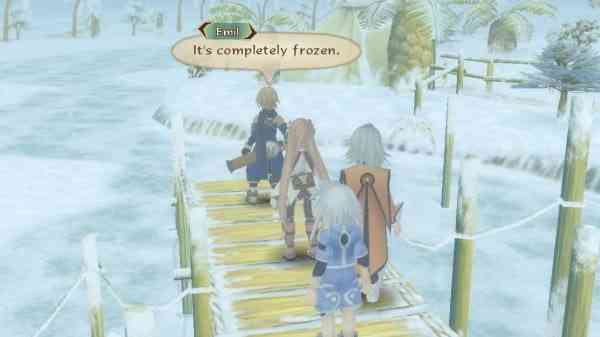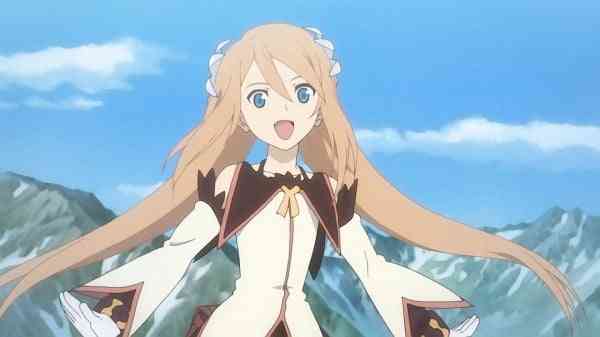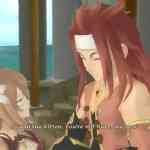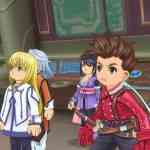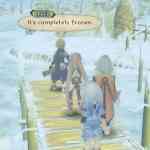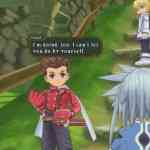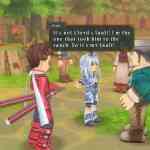I for one am incredibly fond of Tales of Symphonia. It was my first adventure into the’ Tales’ series, and to this day it remains as one of my favorite games. Back when it launched on the GameCube I had little to play by way of RPG’s and Tales of Symphonia did more than I could have hoped for. It moved me away from the idea that an RPG had to be turn based and it threw me into a world bigger than anything I had played up to that point. Naturally, I was thrilled to learn I would get to review its shiny new HD update on the PS3.
I believe that one of the most important jobs as a reviewer is to remain neutral; to look and approach everything from an objective standpoint, to banish nostalgia and remove rose colored glasses if you will. Personal opinions will always shine through to an extent, and although this is something that is should be avoided you will catch a hint of it now and then from anyone. I also believe that even if a game is cramping one’s style I think it’s important to recognize the appeal or the draw of it and how it may bring other people in and get them playing. Take it from me; this is much harder for some games than others. Oh, I’m not talking about Tales of Symphonia…I’m talking about its sequel Tales of Symphonia: Dawn of the New World. Being that Tales of Symphonia Chronicles is actually two games, I’m going to touch more on the sequel (a game which I had neglected to play previously) more so than the original; mostly to keep the review at a readable length.
HD remakes strike me as a funny thing. Ninety-nine percent of them are old games that get upscaled to a higher resolution, reboxed, and shipped out again. Of course the process is a little more difficult than this oversimplification, but I imagine you get the point. The funny here regarding first of the two games in this collection, Tales of Symphonia, is that the new clearer resolution almost does a better job of highlighting the fact that everything else looks very dated. Between the fuzzy textures and sharp edged polygons there were times where I found myself wishing I could play the game again in standard definition. That being said, Tales of Symphonia stands the test of time in other areas. The real-time gameplay which has you commanding one of four party members in an open mini arena battlefield is fun, responsive, and rewarding. At any time during the game you can switch the character you play by changing their control style to manual, while the other three are run by the AI automatically. This is especially cool because you can have friends join you creating up to four player local experience by switching all of your party to manual.
The writing for Tales of Symphonia is among the best in the series. Not only are the characters interesting, there is a certain level of humor involved in their interactions with one another. Commonly, whilst merrily moving along your journey, you’ll be prompted to watch a little conversation clip involving one or more on your party. Some are story heavy, others are just silly, but all are pure fun. The story itself is quite engaging. Many times throughout it’ll have you believing one thing, then it will laugh at you as it throws that all on its head. And, it’s done so in a very original way…or at least it was for its time.
Now, before I lay into Tales of Symphonia: Dawn of the New World I want it to be made clear that I didn’t hate it. I truly enjoyed it for what it was. I just wish it wasn’t a sequel. Had the game been made to be a stand-alone title it would have been a much better game, but as a follow up it was quite disappointing. Dawn of the New World actually got a number of things right! The music remained mostly untouched, with tweaks here and there, but why fix what isn’t broken? There is a great blend of old favorites and new tunes, and even classics with a new spin or two. The music alone works as an incredibly convincing bridge between the two games. Graphically speaking, it is a big step up from the original. The characters are a much higher poly-count with much cleaner textures. It also drops the cell shaded look for a more “realistically shaded” approach. Environments get identical treatment, which really helps push the initial feeling that this game is indeed bigger and better. The game generally runs more smoothly and it improves the user interface to be much more visually pleasing. It all feels more polished and clean, which is great, but for all it did right, it has just as many missteps.
Perhaps my biggest gripe with this title is the new characters. Part of what made the original so strong was the interesting cast. This time around it’s quite the opposite. There are two protagonists and they are both insufferable. The male protagonist is a young boy named Emil. He is quiet, spineless, and a little bit whiny. He is also scared of EVERYTHING and is only of any use in combat because of a very convenient plot device that has him possessed by a monstrous force. I’m looking at you every anime cartoon since Dragon Ball Z. The second character is a young girl named Marta, and she is madly in love with Emil. If I could find a list of every cliché found in modern storytelling I am sure these two would hit at least half of the targets. On the upside, the conversational asides that Tales is so famous for are all fully voiced now. This is a nice touch, even if the dialogue is painful to listen to most of the time.
Mechanically, combat remains the same, and as I mentioned earlier, it actually flows far more smoothly, but instead of new characters you get a monster taming system. Occasionally, at the end of combat, a monster may request to join your party. Monsters vary with eight different elementally aligned varieties, and can learn a number of various spells (“Artes” as the game calls them). They tend to be quite versatile, which is excellent, as your two main characters don’t cover too many bases. Additionally, these creatures will sometimes be able to change their class and become stronger. In a manner similar to Pokemon or Ni No Kuni, these monsters will have an altered appearance and have new traits to utilize in battle. At various points during the story you will be joined by characters from the original game, but these points in the game are only temporary.
The best part about most RPGs is a feeling of adventure, and while it’s not completely in the sequel I found that it is greatly diminished. There is a lack of any sort of hub world. No exploration. No hidden destinations. Nothing. Instead you will find a big map with a scrolling list of places. Click the name and you’re there! While convenient, quick, and easy, it comes off as lazy, boring and uninspired.
I almost feel like I need to repeat myself. Despite my tone and general opinion, Dawn of the New World isn’t completely awful. I had fun and it’s still worth playing, it’s just not an incredible follow up to what was a largely incredible game that preceded it. More or less this particular game only lends itself to the list of reasons why so many people dislike sequels, or prequels (*ahem* Star Wars *ahem*). In the end, despite my lack of excessive enthusiasm for half of what this collection offers, Tales of Symphonia Chronicles is still an awesome bundle to have, if only for the first game alone. Seriously, think of it as getting an awesome game, and then getting another pretty good game with it for free as a bonus! Sounds a lot better that way, doesn’t it?
